Home>Furniture & Design>Bathroom Accessories>How To Clean A Toilet Bowl With Bleach
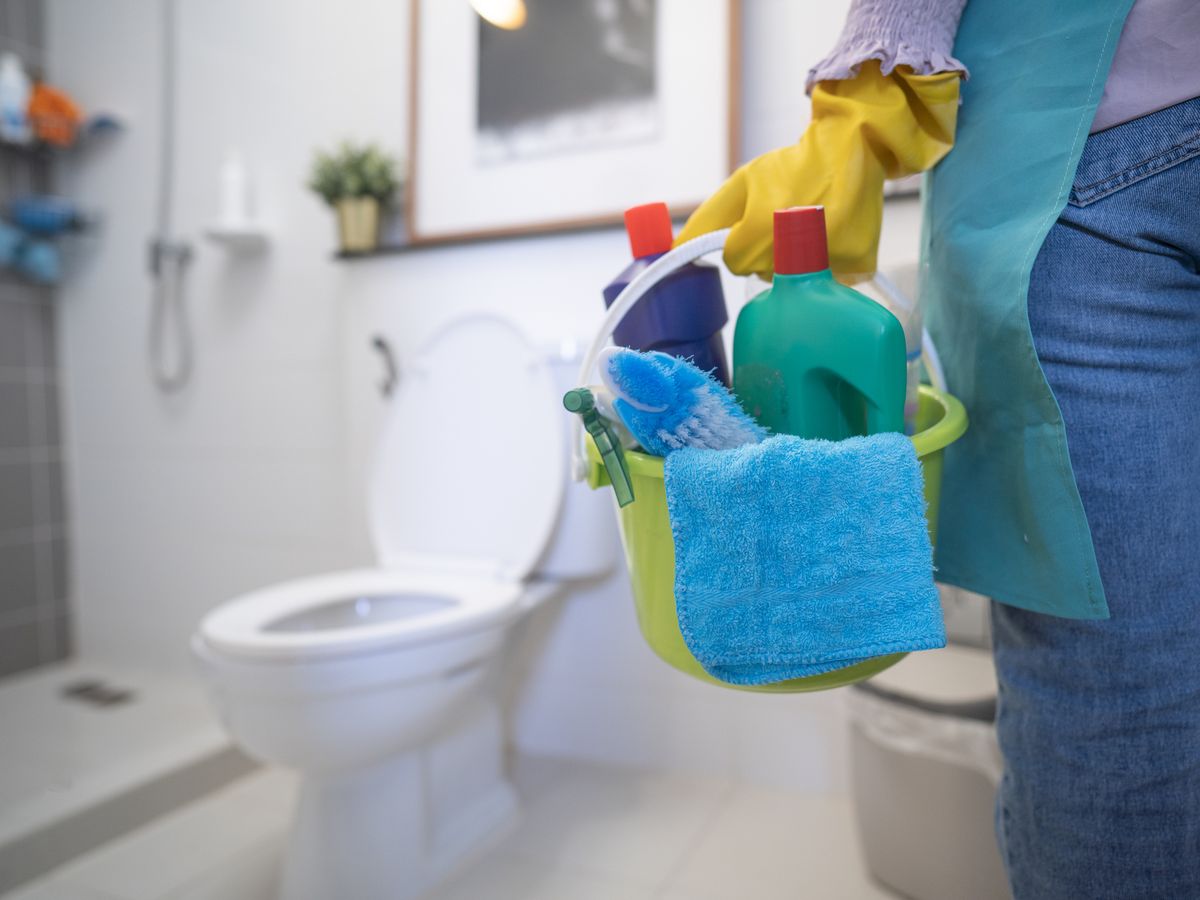

Bathroom Accessories
How To Clean A Toilet Bowl With Bleach
Modified: March 8, 2024
Learn how to effectively clean your toilet bowl with bleach and keep your bathroom accessories sparkling clean. Follow our simple steps for a fresh and hygienic bathroom.
(Many of the links in this article redirect to a specific reviewed product. Your purchase of these products through affiliate links helps to generate commission for Storables.com, at no extra cost. Learn more)
Introduction
Cleaning a toilet bowl with bleach is an essential part of maintaining a clean and hygienic bathroom. Over time, mineral deposits, grime, and bacteria can accumulate in the toilet bowl, leading to unsightly stains and unpleasant odors. Fortunately, bleach is a powerful cleaning agent that can effectively eliminate these issues, leaving your toilet sparkling clean and free from germs.
In this comprehensive guide, we will walk you through the step-by-step process of using bleach to clean your toilet bowl effectively. Whether you are a seasoned cleaning enthusiast or a novice in the realm of household maintenance, this guide will equip you with the knowledge and techniques needed to tackle this chore with confidence.
By following the instructions outlined in this guide, you will not only achieve a visibly cleaner toilet bowl but also contribute to a healthier and more sanitary bathroom environment for you and your family. With the right approach and a few simple supplies, you can transform your toilet bowl from grimy to gleaming in no time.
So, roll up your sleeves, gather your cleaning supplies, and let's dive into the process of revitalizing your toilet bowl with the power of bleach. Get ready to witness the transformative effects of this potent cleaning agent as we guide you through each step, ensuring that your toilet bowl is not only clean but also free from harmful bacteria and odors. Let's embark on this cleaning journey together and discover how easy and rewarding it can be to maintain a pristine toilet bowl with the help of bleach.
Key Takeaways:
- Keep your toilet bowl clean and germ-free by using bleach. Follow the step-by-step guide to effectively apply bleach, scrub the bowl, and ensure a sparkling, sanitized finish. It’s easy and rewarding!
- Prioritize safety when using bleach to clean your toilet bowl. Wear protective gear, ensure ventilation, and avoid mixing with other cleaners to create a secure and controlled cleaning environment.
Read more: How To Clean A Toilet With Bleach
Step 1: Gather Your Supplies
Before embarking on the task of cleaning your toilet bowl with bleach, it's essential to gather all the necessary supplies. Having the right tools and cleaning agents at your disposal will streamline the process and ensure that you can tackle the job efficiently. Here's a comprehensive list of supplies you'll need:
-
Bleach: This powerful disinfectant and cleaner will be the primary agent for removing stains, killing germs, and deodorizing your toilet bowl. Opt for a bleach specifically formulated for household cleaning purposes.
-
Rubber Gloves: Protect your hands from direct contact with bleach and bacteria by wearing rubber gloves. This will also prevent skin irritation and ensure safe handling of cleaning agents.
-
Toilet Brush: A sturdy toilet brush with durable bristles is essential for scrubbing away stubborn stains and residue. Choose a brush with an ergonomic handle for comfortable use.
-
Protective Eyewear: While optional, wearing protective eyewear can shield your eyes from accidental splashes of bleach during the cleaning process.
-
Ventilation: Ensure proper ventilation in the bathroom by opening windows or using a fan. This will help dissipate the strong odor of bleach and minimize inhalation of fumes.
-
Cleaning Cloth or Sponge: Keep a cleaning cloth or sponge handy for wiping down the exterior of the toilet and cleaning any surrounding surfaces that may come in contact with bleach.
-
Old Clothing or Apron: To protect your clothing from accidental splashes or spills, consider wearing old clothing or an apron dedicated to cleaning tasks.
By assembling these supplies before you begin, you'll create a conducive environment for effectively cleaning your toilet bowl with bleach. With these tools at your disposal, you'll be well-prepared to tackle the subsequent steps and achieve a thoroughly clean and sanitized toilet bowl.
Step 2: Prepare the Toilet Bowl
Before applying bleach to the toilet bowl, it's crucial to prepare the surface to ensure maximum effectiveness of the cleaning process. Proper preparation will help loosen stubborn stains, eliminate bacteria, and facilitate thorough cleaning. Follow these steps to prepare the toilet bowl for the application of bleach:
-
Flush the Toilet: Start by flushing the toilet to wet the inner surface of the bowl. This initial step helps to remove any loose debris and dilute the existing water in the bowl, making it easier to apply the bleach evenly.
-
Wear Protective Gear: Put on rubber gloves to protect your hands from direct contact with the toilet bowl and cleaning agents. Additionally, consider wearing protective eyewear to shield your eyes from potential splashes of bleach during the cleaning process.
-
Ventilate the Area: Ensure proper ventilation in the bathroom by opening windows or turning on a fan. This is essential for minimizing the inhalation of bleach fumes and creating a well-ventilated environment for the cleaning process.
-
Lift the Toilet Seat and Lid: Lift both the toilet seat and lid to access the entire inner surface of the toilet bowl. This step allows for thorough cleaning and ensures that no areas are overlooked during the application of bleach.
-
Inspect for Stubborn Stains: Take a moment to inspect the toilet bowl for any particularly stubborn stains or mineral deposits. Identifying these trouble spots will help you focus your cleaning efforts and ensure that they receive adequate attention during the scrubbing process.
By meticulously preparing the toilet bowl, you set the stage for a successful cleaning process with bleach. These preparatory steps create a conducive environment for the application of bleach and subsequent scrubbing, ultimately leading to a cleaner, more sanitized toilet bowl. With the surface properly prepared, you are now ready to move on to the next step and apply the bleach to begin the cleaning process.
Step 3: Apply the Bleach
With the toilet bowl properly prepared, it's time to apply the bleach to initiate the cleaning process. Bleach is a potent disinfectant and stain remover that can effectively tackle tough stains, kill germs, and deodorize the toilet bowl. Follow these steps to ensure the proper application of bleach for optimal cleaning results:
-
Measure the Bleach: Begin by carefully measuring the appropriate amount of bleach for the toilet bowl. Refer to the manufacturer's instructions for the recommended dilution ratio, especially if you are using concentrated bleach. Typically, a half cup to one cup of bleach is sufficient for standard toilet bowls.
-
Pour the Bleach: Slowly pour the measured bleach directly into the toilet bowl. Aim to distribute the bleach evenly around the inner surface of the bowl, ensuring that it reaches all areas, including under the rim and near the waterline.
-
Avoid Splashing: Exercise caution to prevent splashing while pouring the bleach. Pour the bleach gently and steadily to minimize the risk of accidental spills or splatters. This will help maintain a clean and controlled application process.
-
Target Stubborn Stains: If there are specific areas with stubborn stains or mineral deposits, consider directly applying a small amount of undiluted bleach to these trouble spots. This targeted approach can help address localized discoloration effectively.
-
Allow the Bleach to Set: Once the bleach has been applied, allow it to sit undisturbed in the toilet bowl for a recommended duration. Refer to the bleach manufacturer's instructions for the appropriate contact time, typically ranging from 5 to 10 minutes, to ensure maximum effectiveness.
-
Close the Lid: To prevent accidental contact with the bleach and minimize the release of fumes, consider closing the toilet lid during the contact time. This precautionary measure also helps maintain a safe and controlled environment during the cleaning process.
By following these steps, you can ensure that the bleach is applied effectively and uniformly throughout the toilet bowl, targeting stains, germs, and odors. The application of bleach sets the stage for the subsequent scrubbing process, allowing the potent cleaning agent to work its magic and prepare the surfaces for thorough cleaning. With the bleach in place, you are now ready to proceed to the next step and begin scrubbing the toilet bowl to achieve a pristine and sanitized finish.
Step 4: Scrub the Toilet Bowl
After allowing the bleach to sit for the recommended duration, it's time to roll up your sleeves and tackle the next crucial step: scrubbing the toilet bowl. This hands-on process is essential for loosening and removing stubborn stains, mineral deposits, and residual grime, ensuring that the toilet bowl is thoroughly clean and sanitized. Follow these detailed steps to effectively scrub the toilet bowl and achieve a sparkling finish:
-
Use the Toilet Brush: Equip yourself with a sturdy toilet brush featuring durable bristles designed for effective scrubbing. The brush should have an ergonomic handle for comfortable grip and maneuverability.
-
Scrub the Inner Surface: Starting from under the rim, insert the toilet brush into the water and scrub the inner surface of the bowl in a circular motion. Apply moderate pressure to target tough stains and mineral deposits, ensuring comprehensive coverage.
-
Focus on Trouble Spots: Pay special attention to areas with visible stains or discoloration. Use the bristles of the toilet brush to agitate these trouble spots, working to dislodge and remove any lingering residue.
-
Reach Under the Rim: Ensure that the bristles of the toilet brush reach under the rim of the toilet bowl. This often-neglected area can harbor hidden grime and bacteria, so thorough scrubbing is essential for comprehensive cleaning.
-
Work Down to the Waterline: Continue scrubbing downward, reaching the waterline and addressing any remaining stains or deposits. The goal is to achieve a consistent level of cleanliness throughout the entire inner surface of the toilet bowl.
-
Flush the Toilet: Once the scrubbing process is complete, flush the toilet to rinse away the loosened debris and residual bleach. This step helps to reveal the results of your scrubbing efforts and ensures a fresh start for the final stages of the cleaning process.
By following these detailed steps, you can effectively scrub the toilet bowl, targeting stains, mineral deposits, and bacteria for a thorough cleaning. The hands-on approach of scrubbing ensures that all areas of the toilet bowl receive the attention they need, resulting in a visibly cleaner and more hygienic finish. With the scrubbing process completed, you are now ready to proceed to the next steps and complete the cleaning process, leaving your toilet bowl gleaming and sanitized.
Read more: How To Clean Toilet Bowl With Coke
Step 5: Let the Bleach Sit
Allowing the bleach to sit undisturbed in the toilet bowl is a crucial step in the cleaning process. This period of contact time is essential for the bleach to effectively target and eliminate stains, germs, and odors, ensuring a thorough and hygienic cleaning outcome. The duration for which the bleach should sit in the toilet bowl varies based on the specific product used, with typical recommendations ranging from 5 to 10 minutes. During this time, the potent cleaning properties of the bleach come into play, working to break down and lift stubborn stains while simultaneously disinfecting the surfaces.
As the bleach sits in the toilet bowl, its active ingredients penetrate the grime and mineral deposits, effectively breaking them down for easier removal during the subsequent scrubbing process. Additionally, the disinfectant properties of the bleach work to kill harmful bacteria and germs, contributing to a cleaner and more sanitary toilet bowl. This contact time is also instrumental in deodorizing the toilet bowl, neutralizing unpleasant odors and leaving behind a fresh and clean scent.
Closing the toilet lid during the contact time serves as a safety measure, preventing accidental contact with the bleach and minimizing the release of fumes into the surrounding environment. This precaution ensures a controlled and safe cleaning process, particularly when using concentrated bleach products. The closed lid also helps maintain the potency of the bleach by containing the fumes and allowing them to work effectively within the confined space of the toilet bowl.
By allowing the bleach to sit undisturbed for the recommended duration, you are maximizing its cleaning potential and setting the stage for a more efficient and thorough scrubbing process. This period of contact time is a critical component of the overall cleaning regimen, enabling the bleach to work its magic and prepare the surfaces for the final stages of the cleaning process. With the bleach effectively in place, the subsequent steps will build upon its cleaning efficacy, ultimately leading to a visibly cleaner, sanitized, and deodorized toilet bowl.
Step 6: Flush the Toilet
After the scrubbing process and allowing the bleach to sit for the recommended duration, the next crucial step is to flush the toilet. Flushing serves as the final cleansing action, effectively rinsing away the loosened debris, residual bleach, and any remaining contaminants from the toilet bowl. This step not only reveals the results of your cleaning efforts but also ensures that the toilet bowl is left fresh, sanitized, and ready for immediate use.
As you initiate the flushing process, observe the water as it flows into the bowl and watch for any signs of lingering stains or discoloration. The swift rush of water serves to carry away the remnants of the cleaning process, providing a clear indication of the cleanliness achieved. Additionally, the force of the water helps to dislodge any remaining particles, ensuring a thorough rinse of the inner surfaces.
Once the flushing is complete, take a moment to inspect the toilet bowl for any residual stains or discoloration. If necessary, consider a second flush to further ensure the removal of any remaining debris. This additional step can contribute to achieving a pristine and spotless finish, leaving the toilet bowl looking revitalized and impeccably clean.
As the water drains from the bowl, listen for the reassuring sound of a clear and unobstructed flow, indicating the successful removal of debris and the restoration of optimal functionality. The absence of any lingering odors or visible residues further confirms the effectiveness of the cleaning process, leaving the toilet bowl with a fresh and sanitized appeal.
With the flushing process completed, take a moment to appreciate the transformation of your toilet bowl. The combined efforts of scrubbing and allowing the bleach to work its magic have culminated in a visibly cleaner, sanitized, and deodorized toilet bowl. The swift and thorough rinsing action of the flush has effectively washed away the remnants of the cleaning process, leaving behind a pristine and inviting toilet bowl ready for immediate use.
In the next step, we will address the final stages of the cleaning process, ensuring that the toilet bowl is thoroughly rinsed and dried to achieve a gleaming and hygienic finish.
To clean a toilet bowl with bleach, first, put on gloves and pour 1 cup of bleach into the bowl. Let it sit for 10-15 minutes, then scrub with a toilet brush. Flush to rinse. Always use bleach in a well-ventilated area and never mix it with other cleaning products.
Step 7: Rinse and Dry
After the flushing process, the final steps of rinsing and drying are essential to complete the cleaning process and ensure that the toilet bowl is left in optimal condition. These steps focus on removing any residual bleach or cleaning agents, as well as drying the surfaces to achieve a gleaming and hygienic finish.
Rinse the Inner Surface
Using a clean toilet brush or a dedicated cleaning cloth, thoroughly rinse the inner surface of the toilet bowl with water. This step helps to remove any remaining traces of bleach and residual debris, ensuring that the surfaces are free from cleaning agents. Pay special attention to areas under the rim and near the waterline, ensuring comprehensive rinsing for a pristine finish.
Read more: How To Clean A Toilet Brush Without Bleach
Check for Residual Stains
As you rinse the toilet bowl, visually inspect the surfaces for any residual stains or discoloration. If any stubborn stains persist, consider targeted spot cleaning using a diluted cleaning solution or a specialized toilet bowl cleaner. Addressing any remaining stains at this stage ensures that the toilet bowl achieves a uniformly clean and polished appearance.
Dry the Surfaces
Once the rinsing process is complete, use a clean and dry cloth to wipe down the inner surfaces of the toilet bowl. Thoroughly dry the surfaces to remove any remaining moisture and ensure a sparkling finish. This step also helps to reveal the results of the cleaning process, showcasing the pristine and sanitized state of the toilet bowl.
Inspect and Finalize
After drying the surfaces, take a moment to inspect the toilet bowl for any overlooked areas or residual moisture. Ensure that the exterior of the toilet is also free from any cleaning agents or moisture, providing a comprehensive cleaning outcome. With a keen eye for detail, confirm that the toilet bowl is gleaming and ready for use.
By diligently following these final steps of rinsing and drying, you can elevate the cleanliness and hygiene of your toilet bowl to the highest standard. The thorough rinsing process ensures the removal of any residual cleaning agents, while the meticulous drying of the surfaces leaves the toilet bowl with a polished and inviting appearance. With the cleaning process now complete, your toilet bowl is primed to deliver a fresh and hygienic experience for all who use it.
Safety Precautions
When cleaning a toilet bowl with bleach, it is essential to prioritize safety to prevent potential hazards and ensure a secure cleaning environment. Bleach is a potent cleaning agent that requires careful handling to minimize risks and promote safe usage. By adhering to the following safety precautions, you can safeguard yourself and others while effectively cleaning and sanitizing the toilet bowl:
-
Wear Protective Gear: Prior to handling bleach, don rubber gloves to shield your hands from direct contact with the cleaning agent. Additionally, consider wearing protective eyewear to safeguard your eyes from potential splashes or fumes. These protective measures minimize the risk of skin irritation and eye exposure, ensuring safe handling of cleaning agents.
-
Ensure Adequate Ventilation: Proper ventilation is crucial when using bleach to clean the toilet bowl. Open windows or use a fan to promote air circulation and minimize the inhalation of bleach fumes. Adequate ventilation helps disperse the strong odor of bleach, reducing the concentration of fumes in the immediate cleaning area.
-
Avoid Mixing with Other Cleaners: Never mix bleach with other cleaning products, particularly those containing ammonia or acids. Mixing bleach with certain chemicals can produce toxic fumes and pose serious health risks. Always use bleach in isolation and store it away from incompatible cleaning agents.
-
Handle with Care: When pouring bleach into the toilet bowl, exercise caution to prevent splashing or spills. Pour the bleach gently and steadily to minimize the risk of accidental contact with skin or clothing. Additionally, avoid breathing in the fumes directly and maintain a safe distance from the bleach during application.
-
Close the Toilet Lid: Consider closing the toilet lid during the contact time when the bleach is sitting in the bowl. This precautionary measure helps contain the fumes and prevents accidental contact with the bleach. Keeping the lid closed also minimizes the release of fumes into the surrounding environment, promoting a controlled and safe cleaning process.
-
Store Bleach Safely: Store bleach in a secure and well-ventilated area, away from the reach of children and pets. Ensure that the bleach container is tightly sealed and stored upright to prevent accidental spills. Proper storage minimizes the risk of exposure and maintains the integrity of the cleaning agent.
By adhering to these safety precautions, you can mitigate potential risks associated with cleaning a toilet bowl with bleach. Prioritizing safety not only protects your well-being but also contributes to a secure and controlled cleaning process. With these measures in place, you can confidently harness the cleaning power of bleach while maintaining a safe and secure environment for yourself and others.
Read more: How To Clean A Saniflo Toilet Bowl
Conclusion
In conclusion, cleaning a toilet bowl with bleach is a fundamental aspect of maintaining a pristine and hygienic bathroom environment. The step-by-step process outlined in this comprehensive guide empowers individuals to effectively utilize bleach as a potent cleaning agent, capable of removing tough stains, eliminating germs, and deodorizing the toilet bowl. By following the detailed instructions and safety precautions, anyone can achieve a visibly cleaner and more sanitized toilet bowl, contributing to a healthier and more inviting bathroom space.
The journey of revitalizing a toilet bowl with bleach begins with gathering the necessary supplies, including bleach, rubber gloves, a toilet brush, and protective eyewear. Proper preparation of the toilet bowl sets the stage for the application of bleach, ensuring that the surfaces are ready to receive the potent cleaning agent. The subsequent steps of applying the bleach, allowing it to sit, and scrubbing the toilet bowl are instrumental in targeting stains, mineral deposits, and bacteria, ultimately leading to a thorough and effective cleaning outcome.
The safety precautions highlighted in this guide emphasize the importance of handling bleach with care and prioritizing safety during the cleaning process. By wearing protective gear, ensuring adequate ventilation, and avoiding the mixing of bleach with other cleaners, individuals can safeguard themselves and create a secure cleaning environment. These precautions are essential for minimizing potential hazards and promoting safe usage of bleach for toilet bowl cleaning.
The final stages of the cleaning process, including flushing, rinsing, and drying, culminate in a gleaming and hygienic toilet bowl ready for immediate use. The meticulous attention to detail and adherence to safety measures ensure that the cleaning process is not only effective but also conducted in a controlled and secure manner. With the toilet bowl revitalized and sanitized, individuals can enjoy the benefits of a fresh and inviting bathroom space, free from unsightly stains and lingering odors.
In essence, the process of cleaning a toilet bowl with bleach is not only about achieving a visibly cleaner appearance but also about promoting a healthier and more hygienic environment. By embracing the guidance provided in this guide, individuals can confidently harness the cleaning power of bleach, transforming their toilet bowl into a sparkling and sanitized fixture within the bathroom. With the knowledge and techniques acquired from this guide, maintaining a pristine toilet bowl with the help of bleach becomes an accessible and rewarding endeavor for all.
Frequently Asked Questions about How To Clean A Toilet Bowl With Bleach
Was this page helpful?
At Storables.com, we guarantee accurate and reliable information. Our content, validated by Expert Board Contributors, is crafted following stringent Editorial Policies. We're committed to providing you with well-researched, expert-backed insights for all your informational needs.
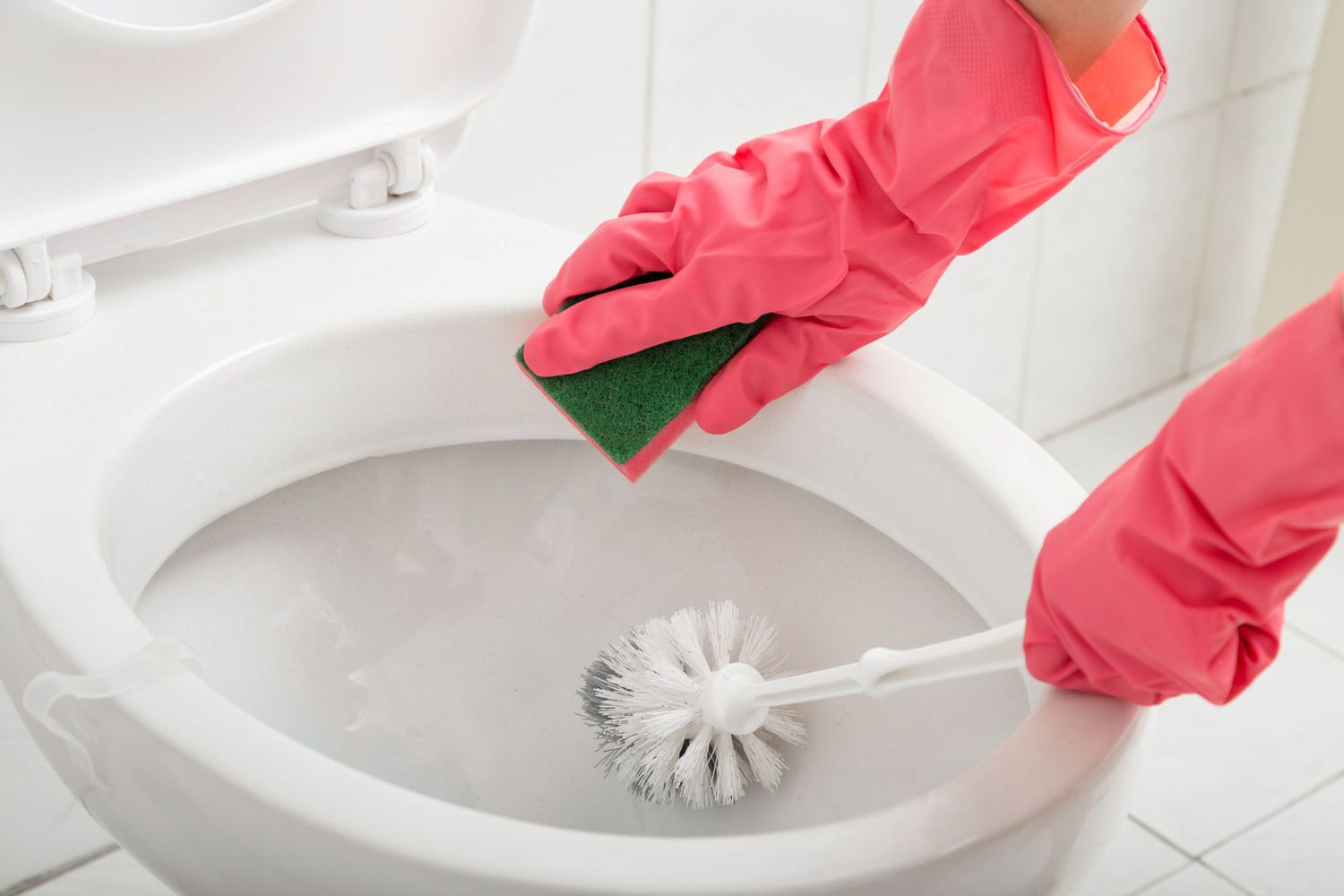
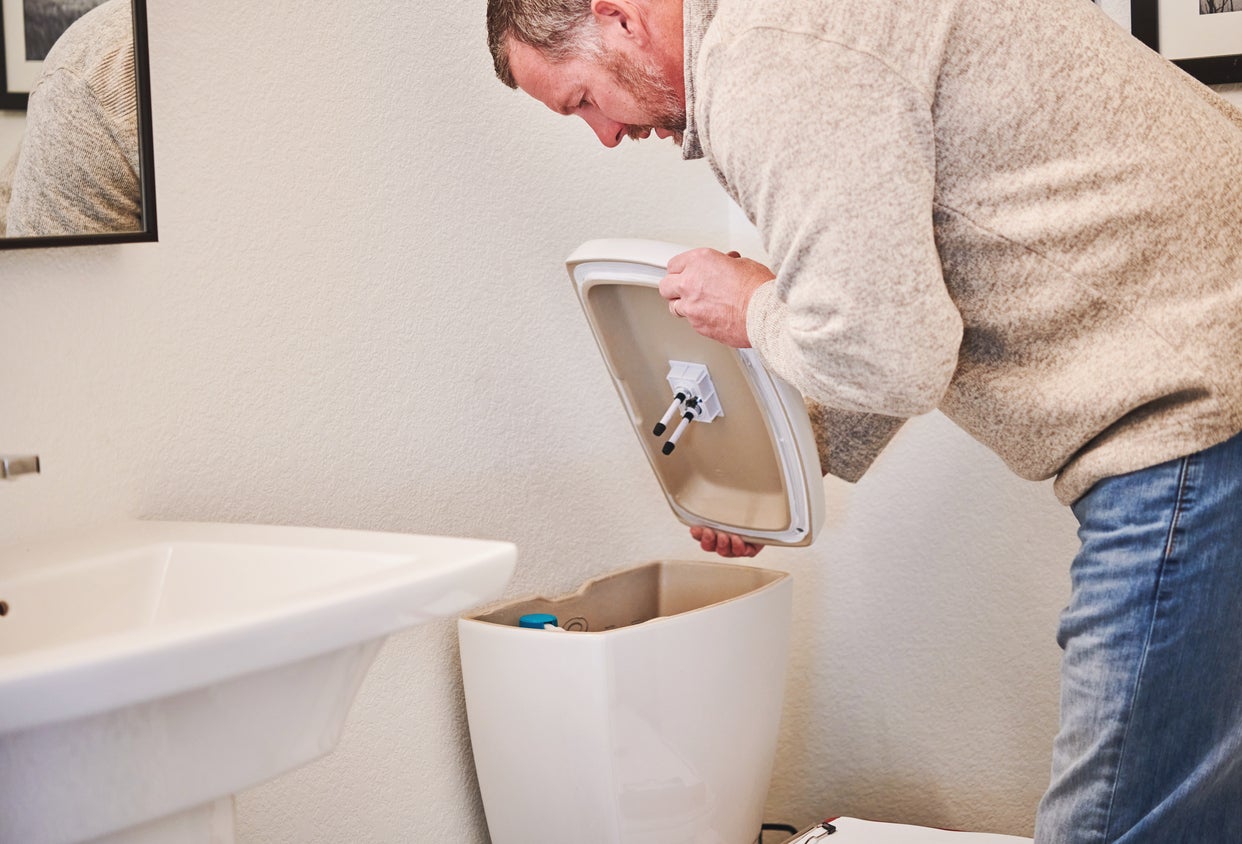
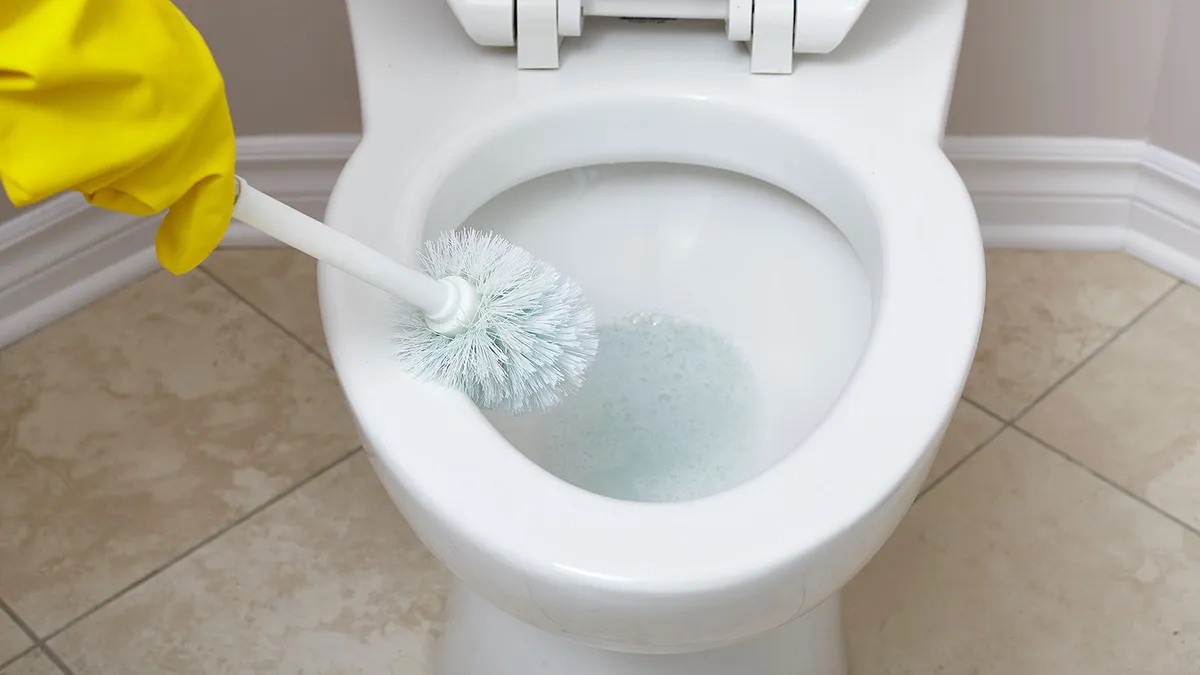
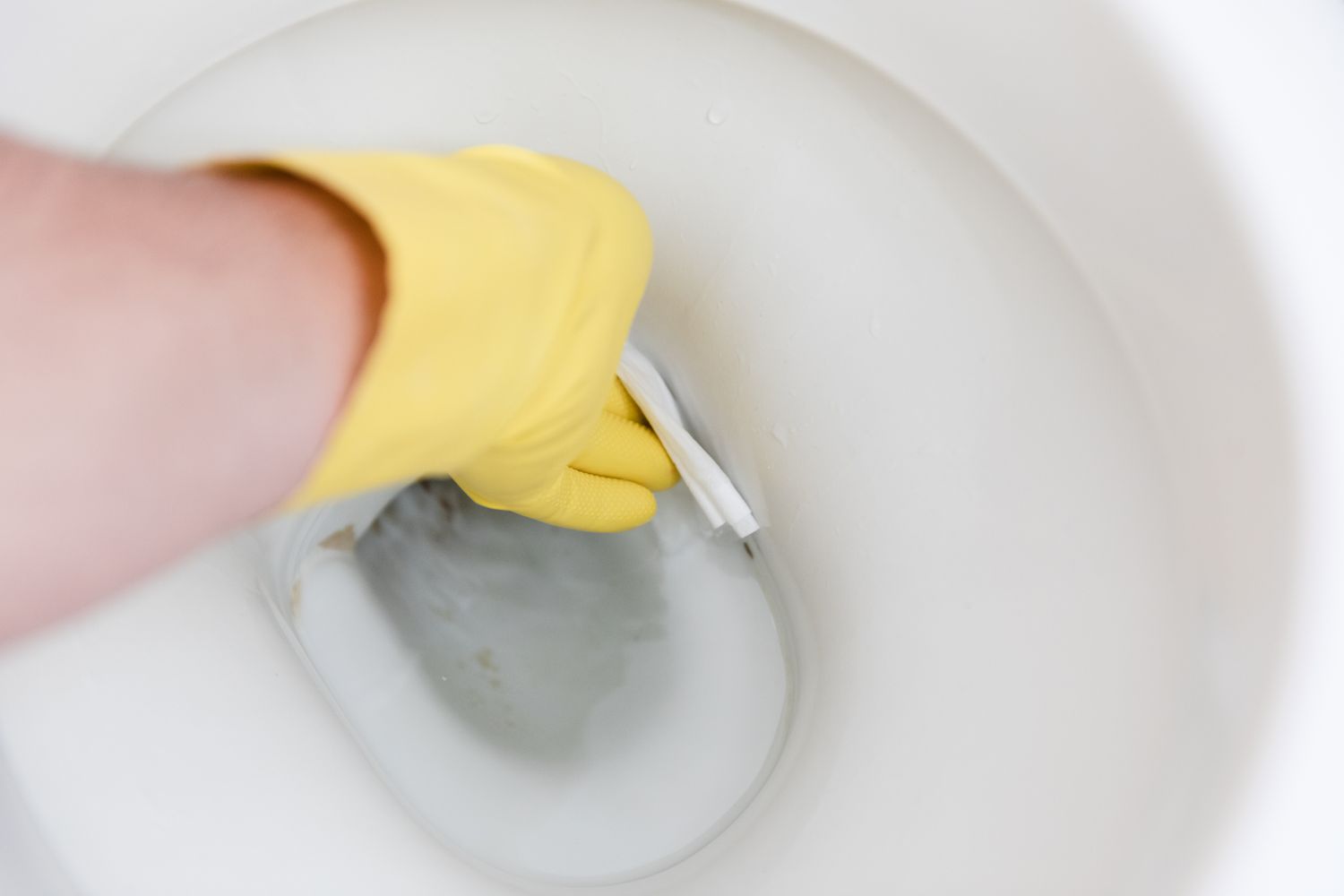
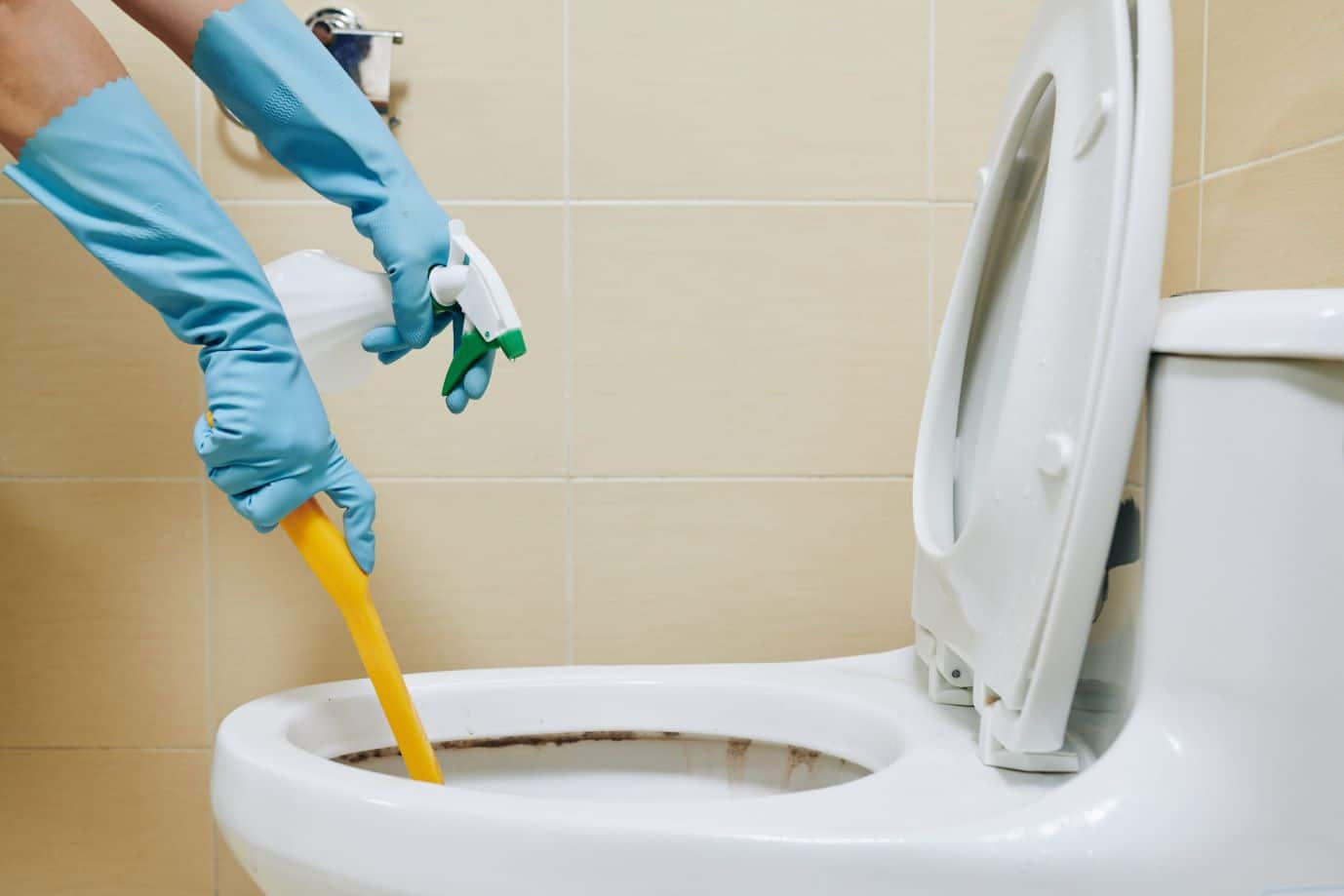
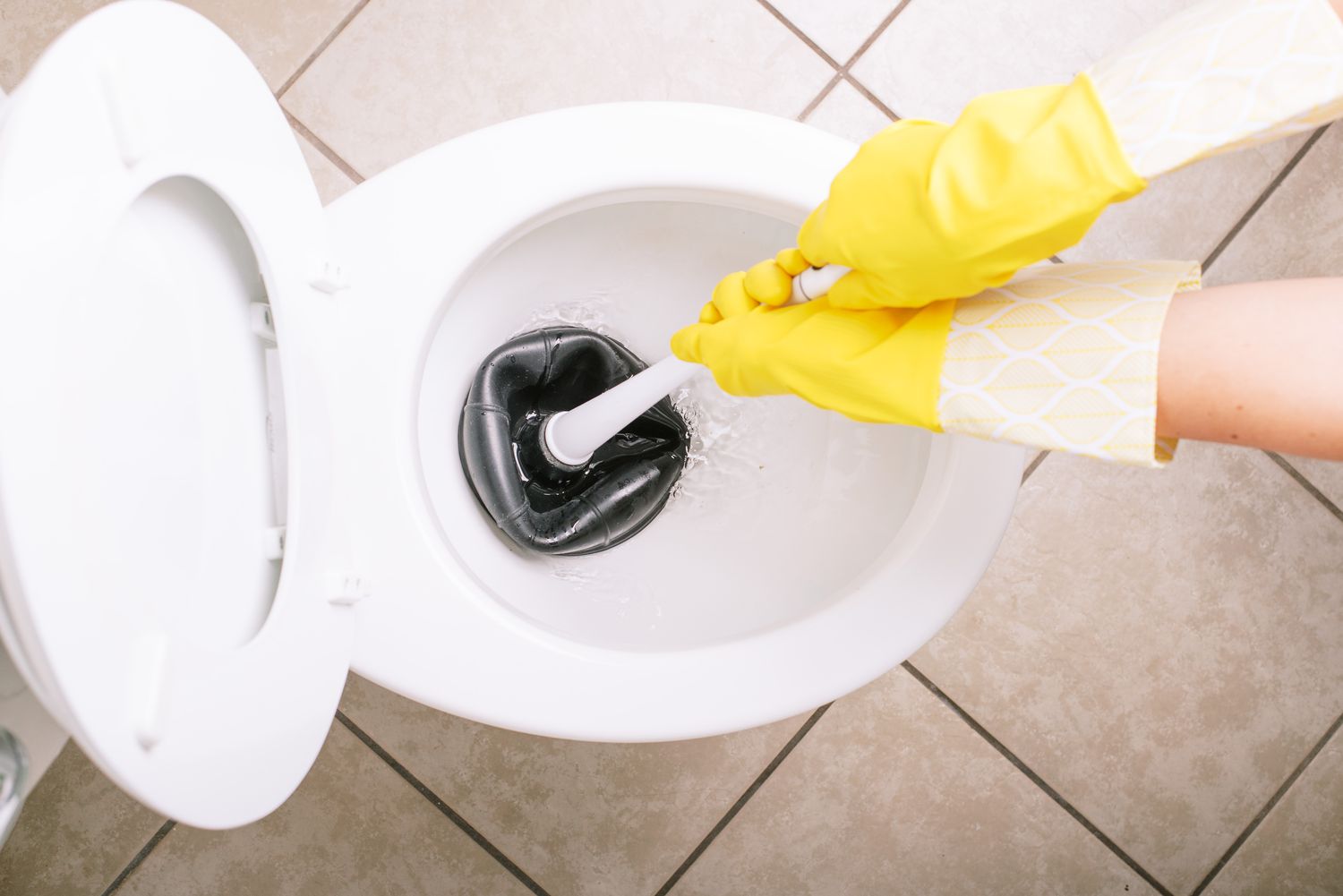
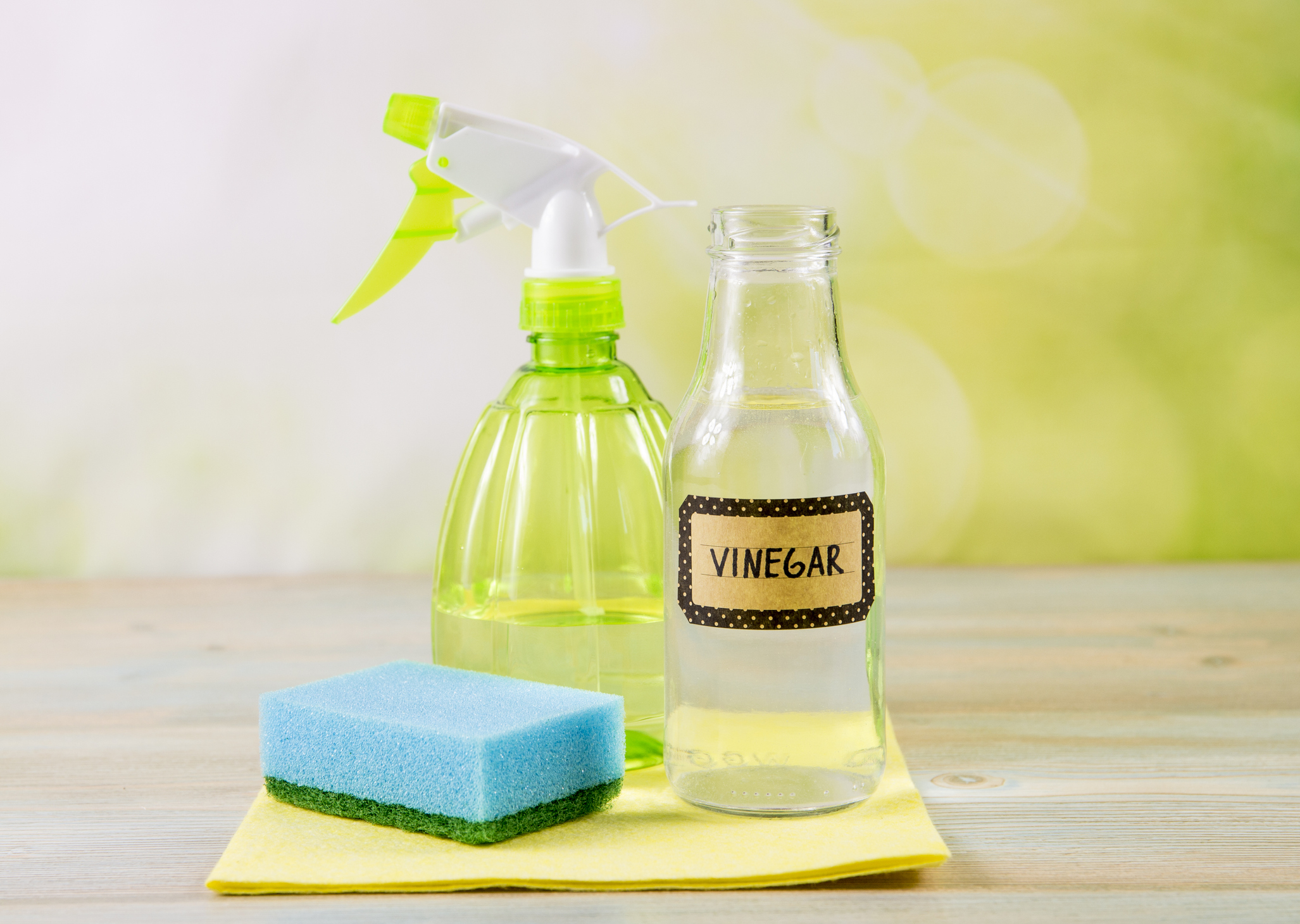
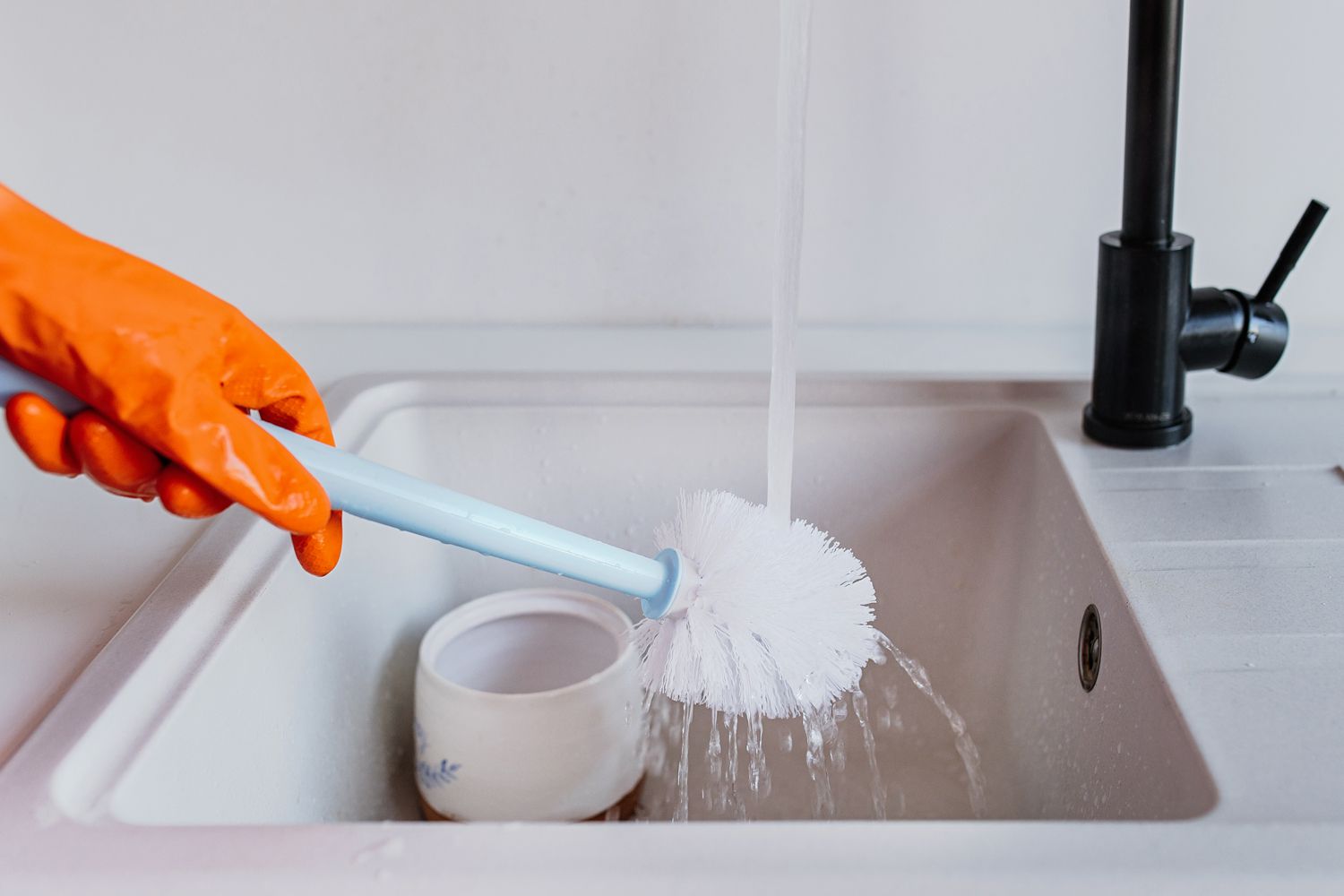
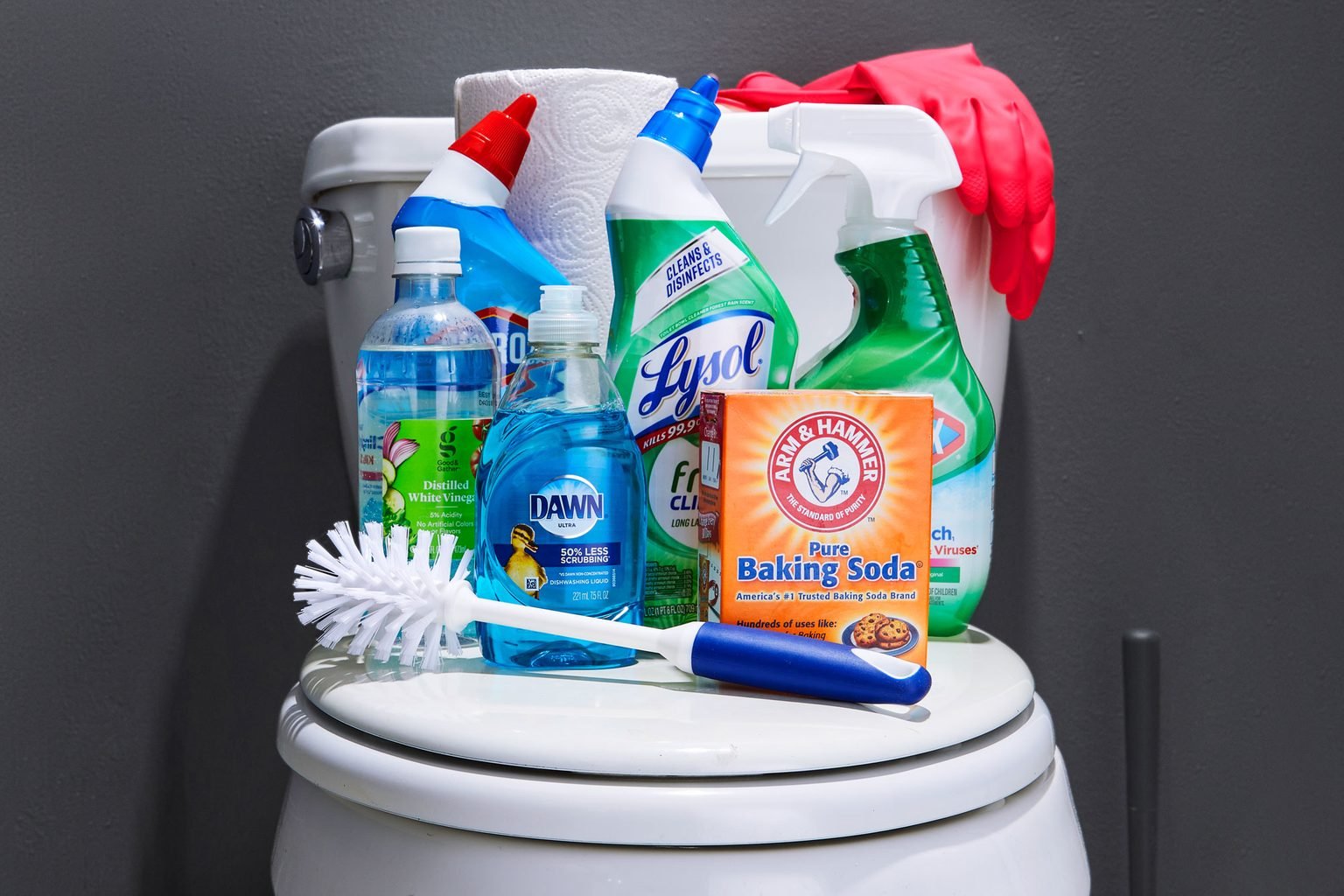
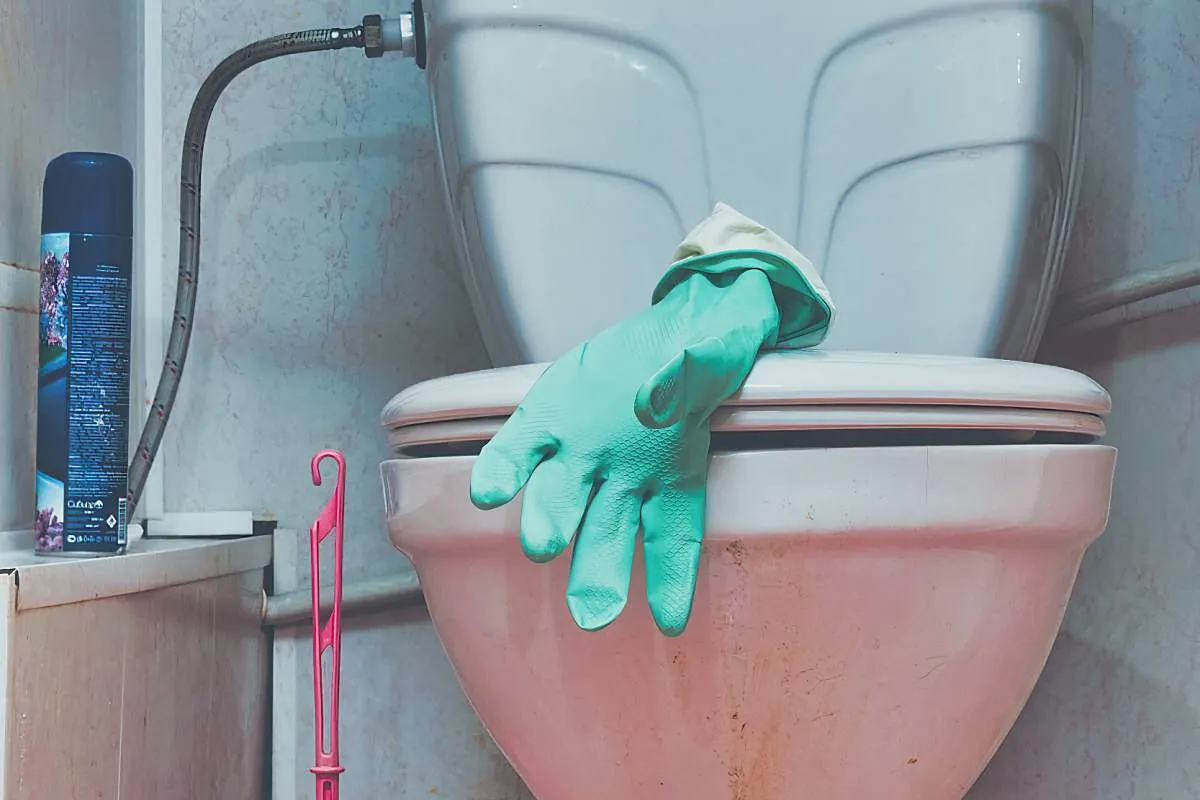
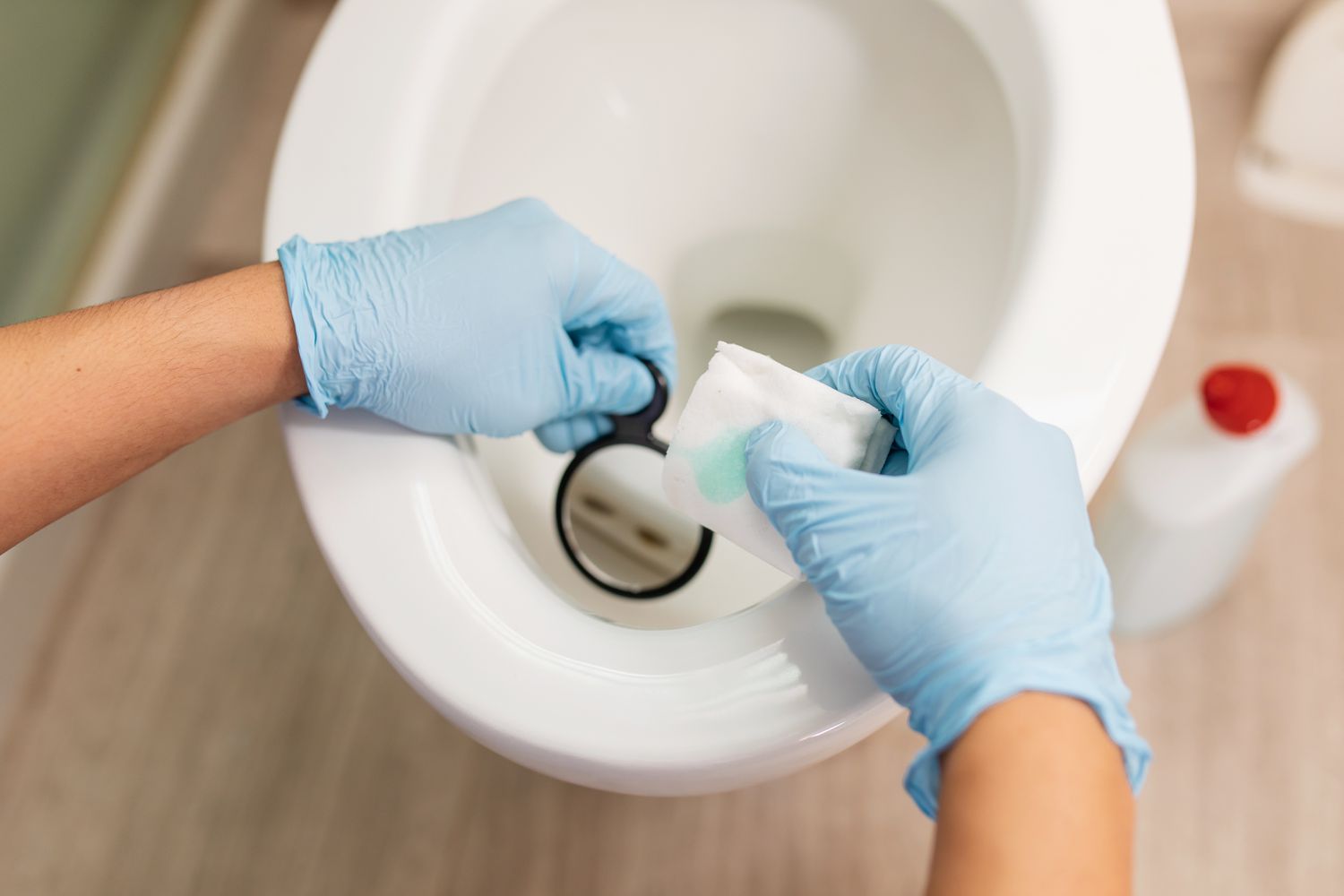
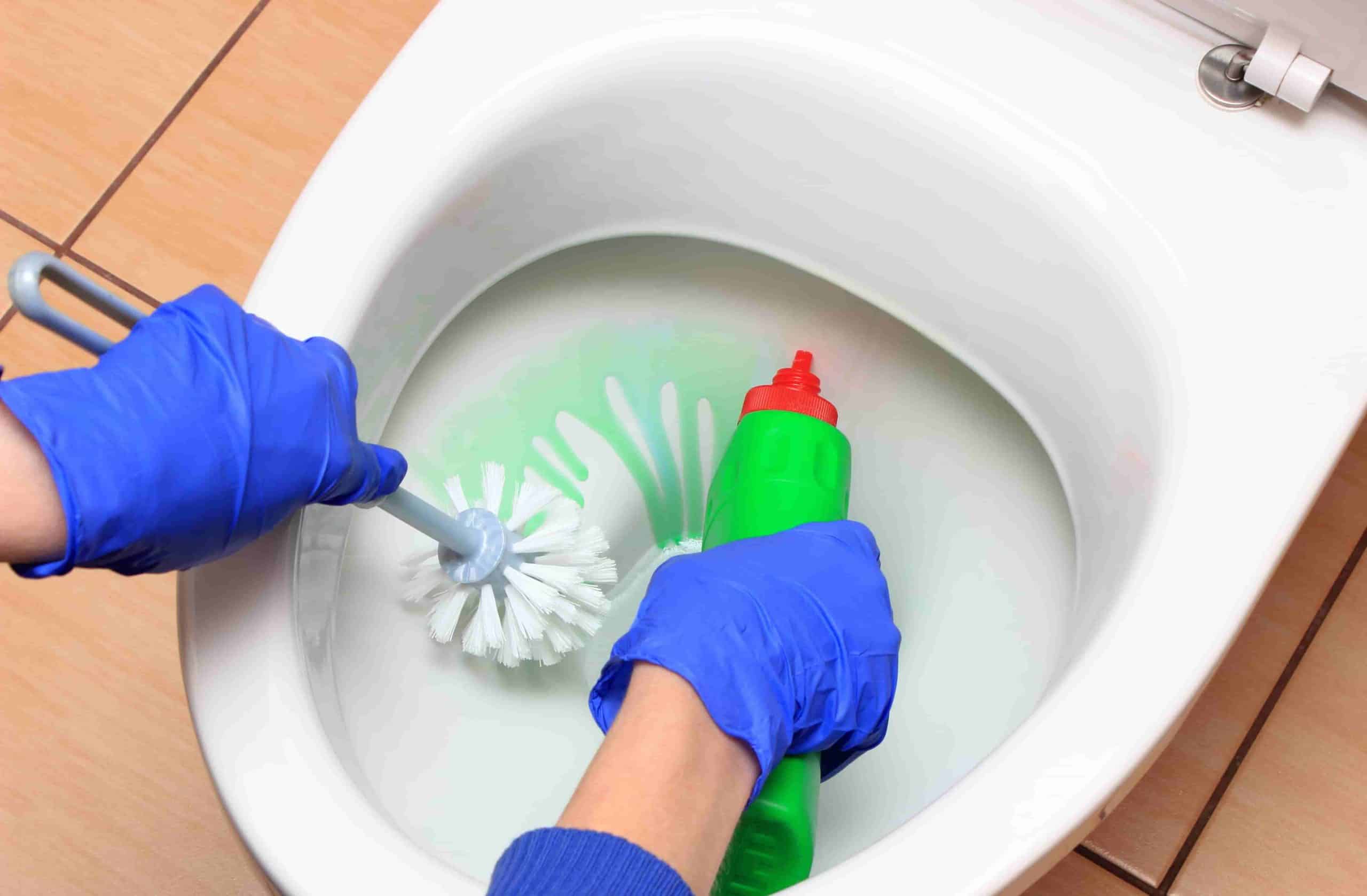

0 thoughts on “How To Clean A Toilet Bowl With Bleach”